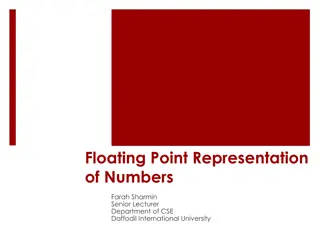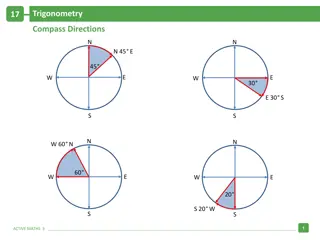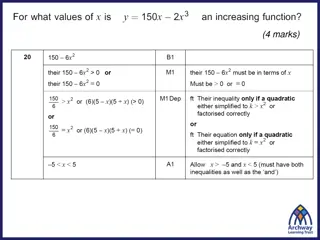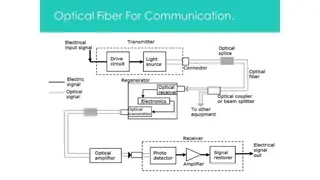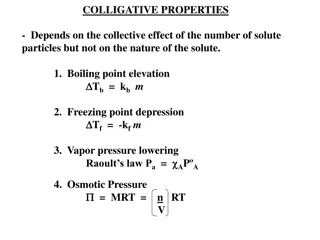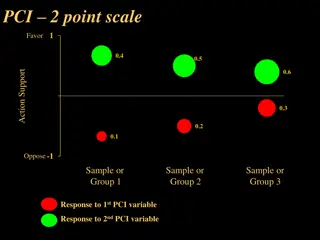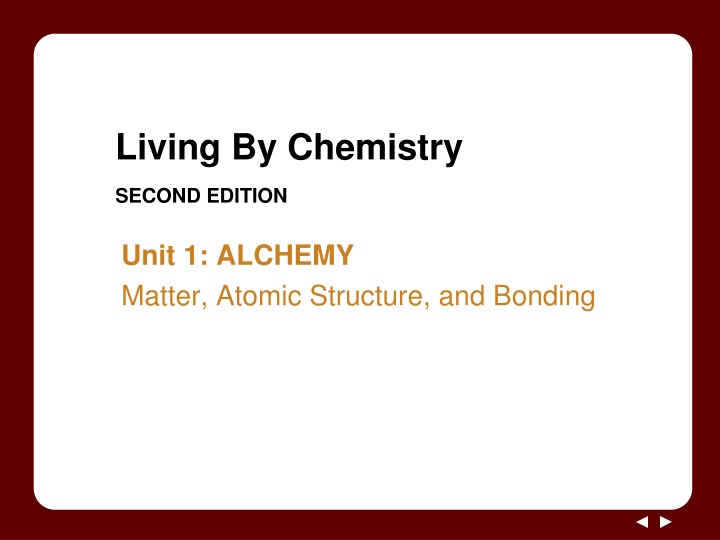
Chemical Formulas for Ionic Compounds
Explore the concept of chemical formulas for ionic compounds and learn how to predict compound formation between metal and nonmetal atoms. Discover the rule of zero charge and the role of valence electrons in determining formulas. Get ready to work with your partner to understand the principles behind the formation of ionic compounds through engaging activities and discussions.
Download Presentation

Please find below an Image/Link to download the presentation.
The content on the website is provided AS IS for your information and personal use only. It may not be sold, licensed, or shared on other websites without obtaining consent from the author. If you encounter any issues during the download, it is possible that the publisher has removed the file from their server.
You are allowed to download the files provided on this website for personal or commercial use, subject to the condition that they are used lawfully. All files are the property of their respective owners.
The content on the website is provided AS IS for your information and personal use only. It may not be sold, licensed, or shared on other websites without obtaining consent from the author.
E N D
Presentation Transcript
Living By Chemistry SECOND EDITION Unit 1: ALCHEMY Matter, Atomic Structure, and Bonding
Lesson 20: Getting Connected Ionic Compounds
ChemCatalyst Metal elements combine with the nonmetal element chlorine, Cl, to form compounds. The formulas are given in the tables. Element Compound Element Compound Element Compound Na NaCl Mg MgCl2 Ne none K KCl Ca CaCl2 Ar none 1. Compare the three tables. What do you notice? 2. Predict the formula of a compound formed between lithium, Li, and chlorine, Cl. Which table would you put it in?
Key Question How can valence electrons be used to predict chemical formulas?
You will be able to: predict the chemical formulas of compounds that will form between metal and nonmetal atoms explain how an ionic compound forms and determine whether it follows the rule of zero charge
Prepare for the Activity Work in pairs. Ionic compound: An ionic compound is a compound composed of positive and negative ions, formed when metal and nonmetal atoms combine.
Discussion Notes Mg2+ + Cl + Cl produces MgCl2 with zero charge.
Discussion Notes (cont.) Metal and nonmetal elements combine to form ionic compounds. The electron arrangements of the cations and anions resemble the arrangements of a noble gas atom.
Discussion Notes (cont.) The rule of zero change can be used to determine the chemical formulas of ionic compounds. Rule of zero charge: In an ionic compound, the positive charges on the metal cations and the negative charges on the nonmetal anions sum to 0.
Discussion Notes (cont.) Chemical Formulas of Ionic Compounds Number of valence electrons for the metal nonmetal Number of valence electrons for the Total number of valence electrons Total positive charge Total negative charge Total charge Example NaF 1 7 8 +1 1 0 MgO 2 6 8 +2 2 0 AlN 3 5 8 +3 3 0 K2Se 1 6 8 2(+1) 2 0 MgCl2 2 7 16 +2 2( 1) 0 AlF2 3 7 24 +3 3( 1) 0 AL2O2 3 6 24 2(+3) 3( 2) 0
Discussion Notes (cont.) The number of electrons associated with the atoms of an ionic compound generally totals 8 or a multiple of 8.
Wrap Up How can valence electrons be used to predict chemical formulas? Metal atoms and nonmetal atoms combine to form ionic compounds. In ionic compounds, the metal is considered a cation, and the nonmetal is considered an anion. The charges on the cations and the anions in ionic compounds sum to 0. Metal atoms and nonmetal atoms usually combine in ratios that result in a total of eight valence electrons or a multiple of eight valence electrons.
Check-In What elements will combine with strontium, Sr, in a 1:1 ratio? Explain your thinking.





